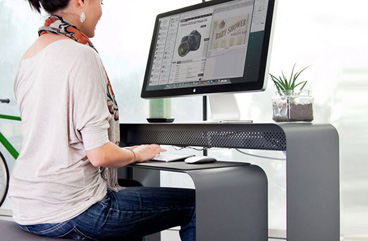Computer Workstation Ergonomics

Setting up a new office?
Are you or your employees absent from work with hand, arm, shoulder or neck pain?
You’re just not sure what office ergonomics is all about?
We can help! Melbourne Occupational Therapy Services will assist you with the information you need to avoid pain and sickness caused by poor computer workstation ergonomics. Principal Occupational Therapist, James Hunter is a firm believer that it’s not just about workstation equipment, it’s also about how the equipment is being used. James understands first-hand the importance of this, having experienced significant arm pain himself from this issue. Medication, massage, acupuncture and even surgery may alleviate the pain somewhat, but are you treating the actual cause? If you don’t treat the cause, the pain will likely return. It may be as simple as Melbourne OT Services assessing you and your computer workstation.
Go to our ‘Contact & Referral’ page, email us your details and we will contact you.
Did you know most people use their humble computer mouse incorrectly?
This can cause pain from carpal tunnel, occupational over-use and repetitive strain type conditions.
Good equipment is only half the answer! Many people buy all the equipment and believe that’s it, done! However, how you use your chair, mouse, desk and screen all together to minimise constantly loading areas of the body while attempting to maximise postural variation is the answer. As our workplaces are increasingly becoming move sedentary, where we sit for long periods, this is one of the most overlooked workplace issues. Our bodies were not designed to be stuck in one position, so it’s about education and managing your workplace health.
WHAT WE DO
1/ We assess you and your environment. We look at your abilities and any medical, age-related or functional issues you may have. We assess and observe your posture and bio-mechanics at your workstation while performing common computer-based tasks. We assess your daily workplace routine and your workstation equipment and how you interact with it.
2/ We make recommendations that usually include changes to equipment, posture, routine, and movement.
3/ We then teach you how to use the equipment together with changes in your techniques, posture and routines.
RECOMMENDATIONS MAY INCLUDE
- Alternate mouse use techniques
- Incorporating postural variation
- Stretching & exercise
- Sit-to stand desk
- Anti-fatigue mat
- Chair, desk, screen set-up and customised to the individual
- Footstool
- Document holder
- Alternating workload and much much more
We can help! Go to our ‘Contact & Referral’ page, email us your details and we will contact you.

